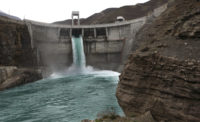Boston-based Bluefield Research released an in-depth analysis of California’s municipal wastewater treatment market.
The report, “California Municipal Wastewater Treatment & Reuse: Market Drivers, Trends, and Outlook,” highlights key drivers and trends impacting greater deployment of reuse systems in California, which is confronting its fourth year of extreme drought.
California holds 28% of U.S. municipal reuse capacity, with another 2.4 million m3/d of announced capacity additions in various stages of development. Indicating further potential to harness reclaimed water are the 479 operating wastewater treatment plants in California. Only 160 of the plants are outfitted with the capability to reuse wastewater effluent, wastewater flows.
A central focus of the report is the water and environmental policy landscape shaping the California wastewater reuse market going forward. At the forefront, future change reflects 372 urban water suppliers in the state. These suppliers were recently mandated by executive order in April to reduce water usage by an average 25%. Urban water suppliers currently source 3% of their water from reclaimed sources.
“Regulators’ inability to rein in demand, demonstrated in 2014 by the 20% voluntary target that achieved only an 8.8% reduction, will drive alternative supply-side solutions such as wastewater reuse,” says Erin Bonney Casey, an analyst for Bluefield Research. “We are already seeing a shift with more than $1.9 billion of reuse applications submitted to state agencies for approval.”
California’s municipal wastewater reuse project pipeline is centered in southern California counties, Los Angeles and San Diego, where extreme water scarcity and rising population are the greatest.
“As the drought moves into its fifth year, project timelines are expected to be pulled forward,” adds Bonney Casey. “The situation is escalating because many announced projects were hatched during a time of less water stress.”


